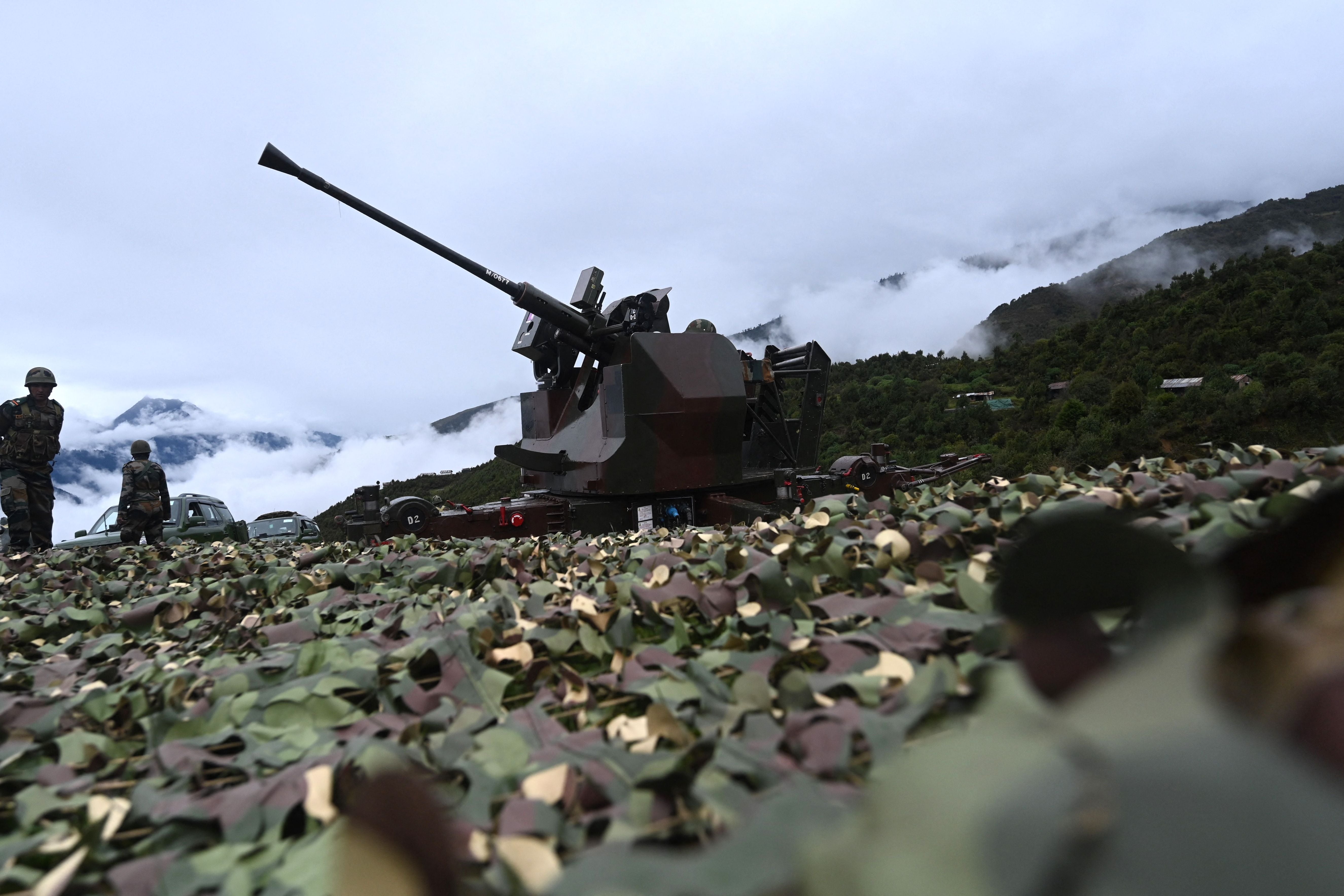India and China ramp up border firepower with Howitzers and rocket launchers
The two nuclear-armed nations are gearing up for a hostile winter

Your support helps us to tell the story
From reproductive rights to climate change to Big Tech, The Independent is on the ground when the story is developing. Whether it's investigating the financials of Elon Musk's pro-Trump PAC or producing our latest documentary, 'The A Word', which shines a light on the American women fighting for reproductive rights, we know how important it is to parse out the facts from the messaging.
At such a critical moment in US history, we need reporters on the ground. Your donation allows us to keep sending journalists to speak to both sides of the story.
The Independent is trusted by Americans across the entire political spectrum. And unlike many other quality news outlets, we choose not to lock Americans out of our reporting and analysis with paywalls. We believe quality journalism should be available to everyone, paid for by those who can afford it.
Your support makes all the difference.India and China are redirecting a battery of weapon systems to their contested borders to ramp up firepower as the two nuclear powers prepare for a second hostile winter after talks ended up in stalemate.
New Delhi has deployed modern Ultra Light Howitzer M777 artillery guns along with its vintage, but now-upgraded L-70 Bofors artillery guns at its eastern border along the Line of Actual Control (LAC), officials in the Indian army told ANI news agency on Thursday.
Troop commander Captain Sariya Abbasi told reporters that the “guns can bring down all unmanned aerial vehicles, unmanned combat aerial vehicles, attack helicopters and modern aircraft.”
China, on the other hand, has advanced more than 100 advanced long-range rocket launchers to the disputed high-altitude borders with India, where the two nuclear powers remain in a year-long standoff, a Chinese military source told South China Morning Post on Tuesday.
The People’s Liberation Army (PLA) “has deployed more than 100 PCL-181 light, truck-mounted Howitzers along borders with India,” the army source said, noting that “firing range of this Chinese-developed launcher is double that of the M777.”
“The latest development of the border talks reminded the PLA to remain vigilant even though winter is coming,” the news outlet reported the source as saying.
The Chinese source revealed that PLA stepped up military build-up mirroring the Indian army’s latest deployment of three regiments with M777 ultra-light Howitzers on its Himalayan border along the LAC. But the source did not confirm whether the PLA deployed the PCL-181 on the Arunachal Pradesh border or at Ladakh.
The Indian army also has M777s deployed in Ladakh, according to the Hindustan Times.
India and China share a loosely demarcated LAC that separates the Indian-territory from the Chinese-controlled in two key sectors — the eastern, spanning Arunachal Pradesh, and the western that separates Ladakh from Aksai Chin. While India considers LAC to be 3,488km long, Beijing believes it only runs for 2,000km.
The latest deployment by the Indian side is on the forward posts of Tawang region in Arunachal Pradesh, India’s eastern border where skirmishes were reported earlier in October.
Beijing and New Delhi have once again redirected thousands of troops and weaponry, after a brief pull back of forces, to prepare for the long haul during hostile winters in the rugged desert mountainous region where temperatures drop to below 40 degrees.
The two nations have been embroiled in border disputes since last year when the first disagreement erupted over infrastructural issues along the LAC. In June, tensions escalated to deadly border clashes in more than 50 years when 20 Indian soldiers and reportedly four Chinese troops were killed in violent hand to hand combat.
Since then, a number of sporadic incidents of clashes were reported between the two armies while their top brass held military commander-level talks to defuse tensions.
In the latest and 13th rounds of talks to disengage, the two armies not only failed to reach any consensus but issued accusatory statements, blaming the other side.
The stalemate resulted in the two sides stocking up on winter supplies, food, water and other gears, as well as defence support before the winter sets in and the region become cut off from the rest of their country.
On Tuesday, India’s eastern army commander Lieutenant General Manoj Pande underscored that the new equipment deployed in the Ladakh sector was being simultaneously mirrored in the east sector as well, with more focus on enhancing mobility, drone and counter-drone systems, precision-guided ammunition and surveillance systems.
He said the borders where deployment was previously thin have been fortified and adequate forces were redirected to deal with any contingency.
According to Indian media reports, China deployed Russian S-400 missile defence systems at the Hotan Airbase in Xinjiang and Nyingchi Airbase in Tibet to fortify the Ladakh border.
In April, China deployed a brigade equipped with PCL-191 vehicle-mounted Howitzers, which are said to be more powerful and have a longer range than the 181 to an area 5,200 metres (17,000 feet) above sea level in Xinjiang, reported Chinese state media CCTV.
The two sides have successfully disengaged in Ladakh from friction points in the north and south banks of Pangong Tso, Patrol Point 14 in Galwan Valley and Petrol Point 17A at the Gogra Post. But disengagement remains stalled in Hot Springs, Demchok and Depsang and PP15.
Join our commenting forum
Join thought-provoking conversations, follow other Independent readers and see their replies
Comments